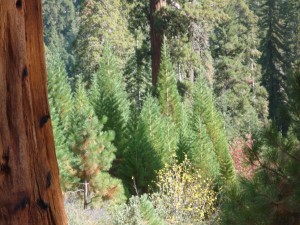
The Rim Fire incinerated many thousands of timbered acres in the Stanislaus National Forest before eventually exhausting itself against the rocky heights of Yosemite National Park.
The 1906 Antiquities Act was passed in reaction to a steady plundering of Native American archeological sites in the pioneer southwest. It has an interesting and colorful history that stretches way beyond its original intent. Many of our national parks, such as the Grand Canyon, began as national monuments.
Because the Act grants a President broad discretion to create national monuments out of federal public lands, most subsequent chief executives have put it to use. National park and wilderness area designations require congressional approval, but not national monuments. That makes the Antiquities Act especially attractive to preservation interests, and to presidents hunting for a legacy. Although the Act refers to “historic landmarks, historic and prehistoric structures, and other objects of historic or scientific interest… which in all cases shall be confined to the smallest area compatible with proper care and management of the objects to be protected,” history has shown that some presidents, (notably Theodore Roosevelt, Jimmy Carter and Bill Clinton) were more than happy to push the envelope when it comes to the exercise of these extraordinary powers.
Clinton’s Sequoia proclamation shuttered one of the two remaining sawmills in the southern Sierra region, eliminating hundreds of forestry-related jobs. The decision was bitterly opposed by local and regional elected officials, business and civic organizations, but to no avail.
Apart from ongoing socio-economic impacts is the question of ecosystem health under a preservation regime that limits active management. The Sequoia Monument is unique because of the scale of its grip on dynamic, renewable yet readily combustible forest resources. It’s easy to proclaim a forest a preserve, much harder to keep it – especially in the seasonally dry West. If reminders are needed, look no further than the massive Rim Fire (2013), which burned 257,000 acres, or the King Fire (2014), which torched 98,000 acres. Both of these blazes devastated vast tracts of publicly owned lands in the Sierra Nevada north of the Sequoia.
Most national monuments are geologic formations, archeological or historic sites. Uncontrolled fire is either a marginal concern, or can be mitigated by fire hydrants and sprinkler systems. But the Sequoia Monument is mainly comprised of highly productive mixed coniferous timberlands, the vast majority of which contain no sequoias. These stands include thousands of acres of rapidly growing forest plantations established, at great public expense, during the Forest Service’s timber production boom. Much of the Monument is densely overstocked in comparison with historical ecological conditions. These timber stands, including the sequoia groves themselves, are faced with the perennial threat of uncontrolled wildfire. A heavily forested Monument set aside in reaction to logging could actually benefit from a bit of it, combined with other management tools, to increase the chances that healthy trees and groves are there to enjoy for coming generations.
TO BE CONTINUED... and yes, the end is in sight! Patience, kind reader!!



